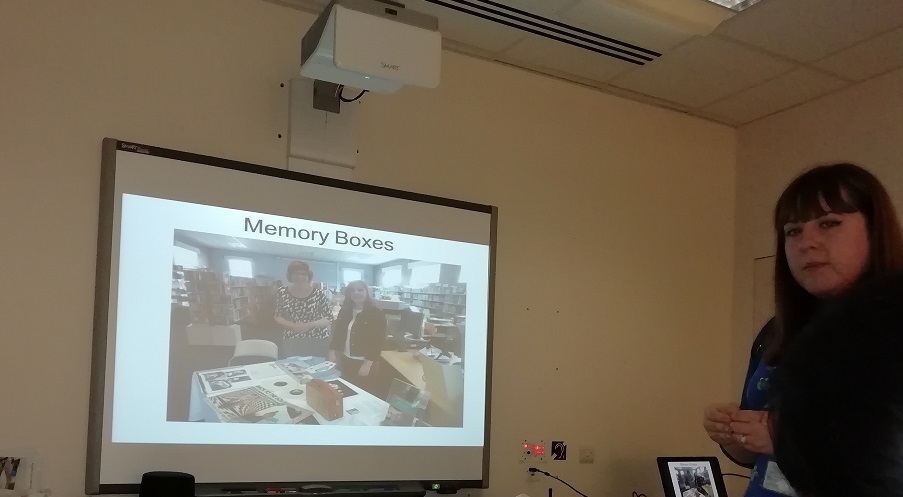
Amazingly, to this museum that teaches the history of Cardiff with such sensitivity and creativity it is easier to gain admittance as a visitor than as a colleague seeking to support its mission. All jokes aside: at present, there are approximately fifty people on the waiting list to participate in its various programs, whether its Memory Box project, its initiative to have secondary school students interview the elderly on their personal histories, its monthly memory-sharing meetings, or any of its other lifelong learning programmes held at external locations. Jordan Taylor-Bosanco is just one of many to have gotten her start this way. Ten years ago, as a university student, she was interested primarily in research dealing with personal stories. Her thesis, too, was built around this subject. In the meantime, she also worked as a museum volunteer and found that it was increasingly this that motivated her. Eventually the museum, now one of the most popular in Cardiff (the award it has just won is a matter we cannot talk about yet…) hired her as a full-time employee. Its institutional mission: to prepare members of the next generation to explore their environment, their history, and their own personal and family stories on their own, using archives, church records, land office documents, and, of course, museums. The museum also teaches people how to create community exhibitions, an objective for which they even make space available on a four-monthly basis. Currently on offer is a community exhibition put together by a medieval heritage group.
There is plenty to do and ideas abound, the most successful at present being the museum’s Memory Box project. A “memory box” is one of four portable boxes on separate themes packed with photographs, objects, and stories, which museum employees use for external activities. The boxes are taken to residential and care homes and community venues, where in the course of discussing their contents, museum workers gain valuable new information and feedback. The hour-long sessions bring a bounty of new images to light. Here, the theme of group reminiscence is strongly in the focus. Four boxes – four decades. Jordan’s favourite is the one for the 1970s, though the “life during the Second World War and the 1940s,” the “life at home during the 1950s,” and the “music and fashion of the 1960s” boxes are all equally popular. The Memory Box initiative, now a model project, has become the subject of nation-wide attention. Museum employees offer lectures on it, while an increasing number of institutions in the United Kingdom have adopted its use.
Throughout Wales, the Well-Being of Future Generations (Wales) Act program has made an impact on the cultural realm and cultural institutions, including, in particular, on the activities of Welsh museums. As organisations that safeguard public collections in the country are strong, they can use their proposals and surveys to represent their stances on a range of issues. It is these organisations who maintain close relations with local communities, regularly meet with, brainstorm with, and create things with the city’s population, and as a result, are a defining part of their day-to-day lives. In addition to changes in mentality, the museum is benefitted by the absence of financial constraints on its activities (see The National Lottery Heritage Fund). Though a few years ago, the young Cardiff Museum, founded in 2011, lost 50% of its funding, space, and staff, the remaining funds proved adequate to continue running the institution successfully.
Every employee of the museum is a Dementia Friend, that is, is not only sympathetic to needs of others, but is also qualified to work with the public. The same can be said of the core staff, who attend regular training sessions on how to help visitors feel the museum their own.








